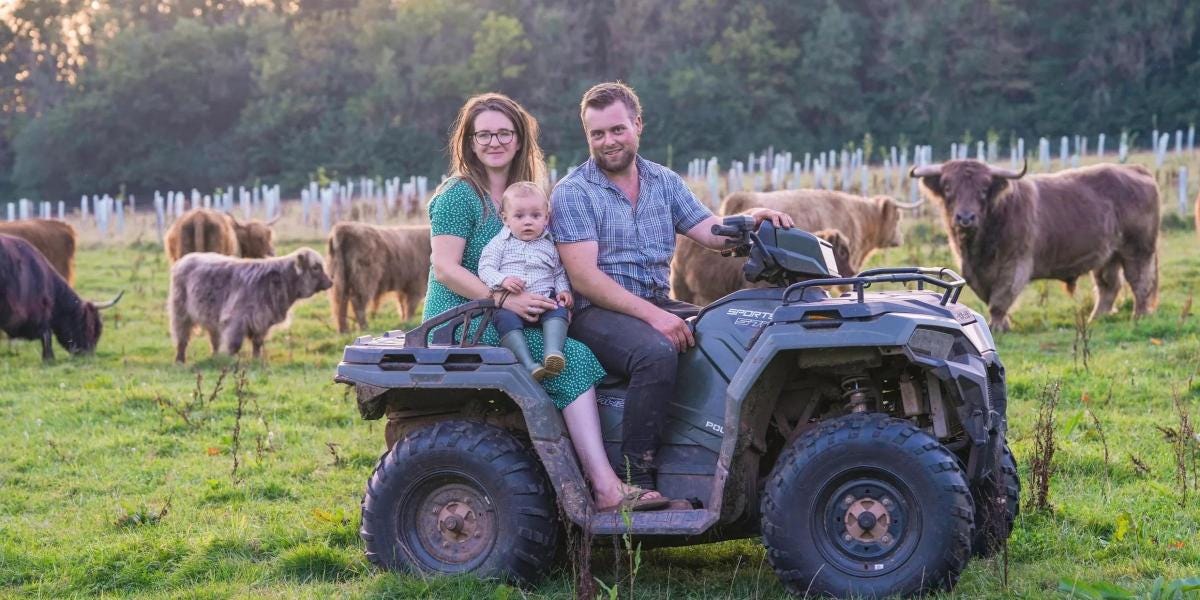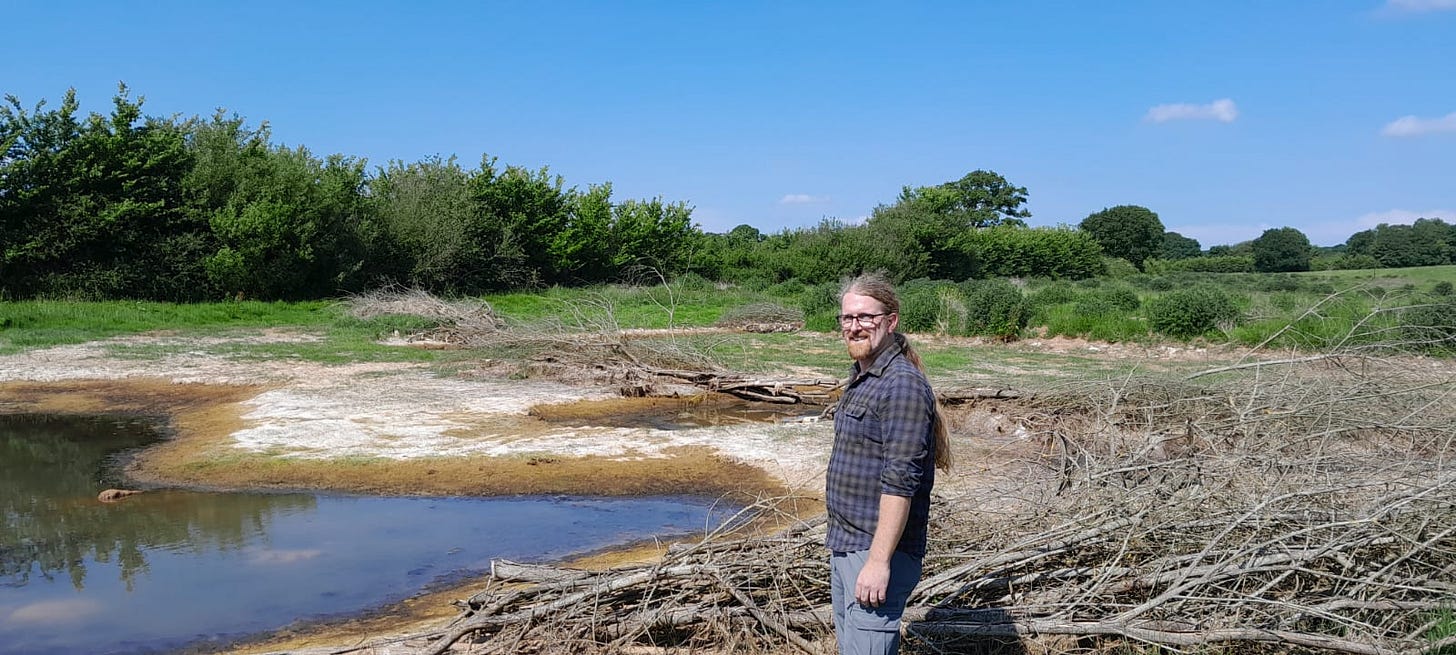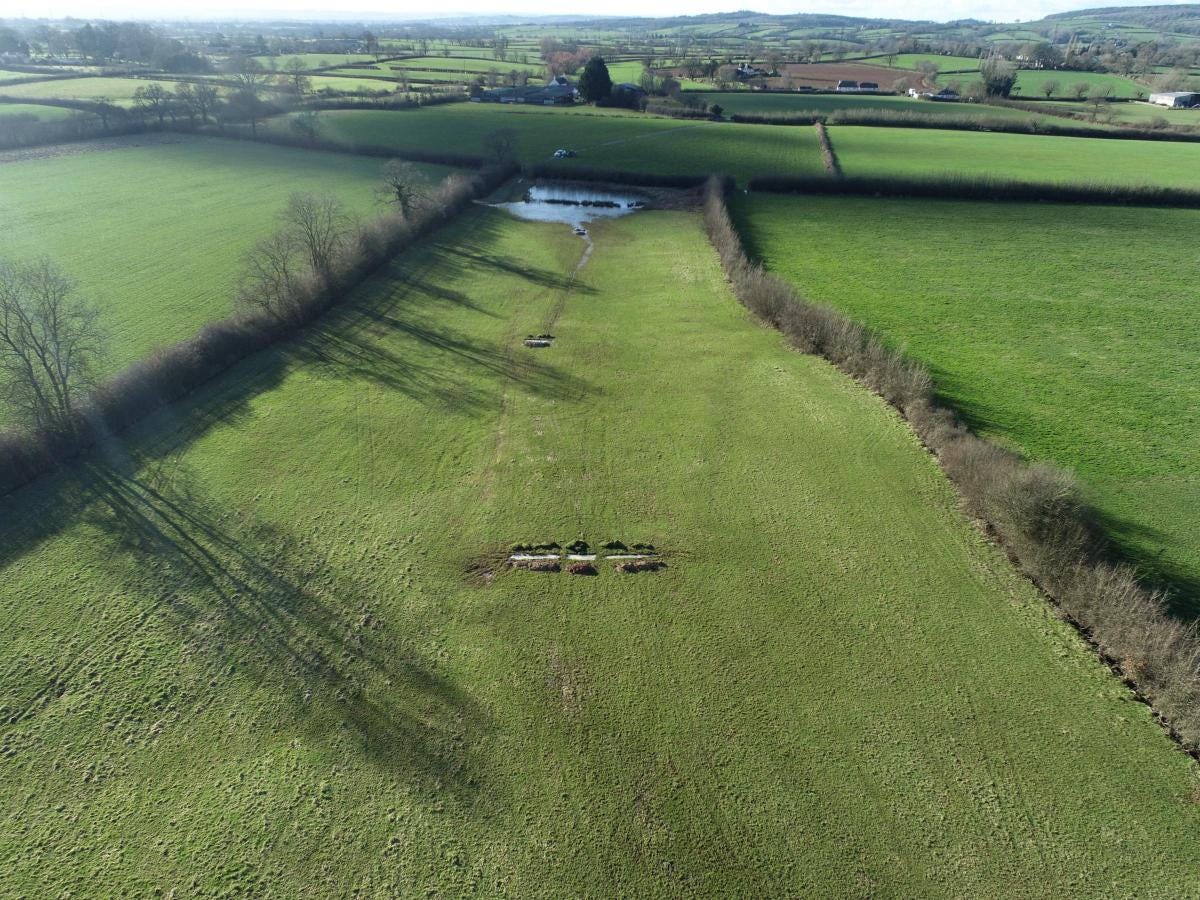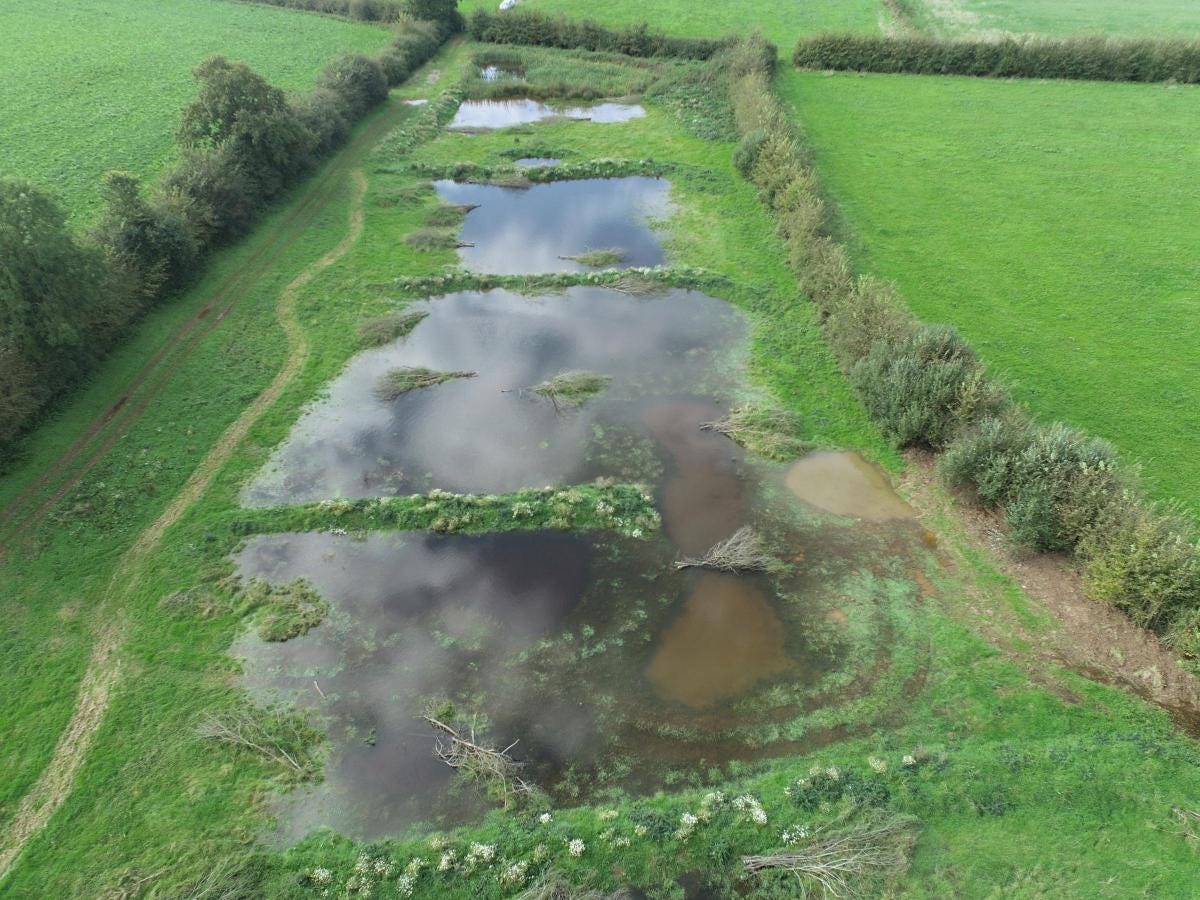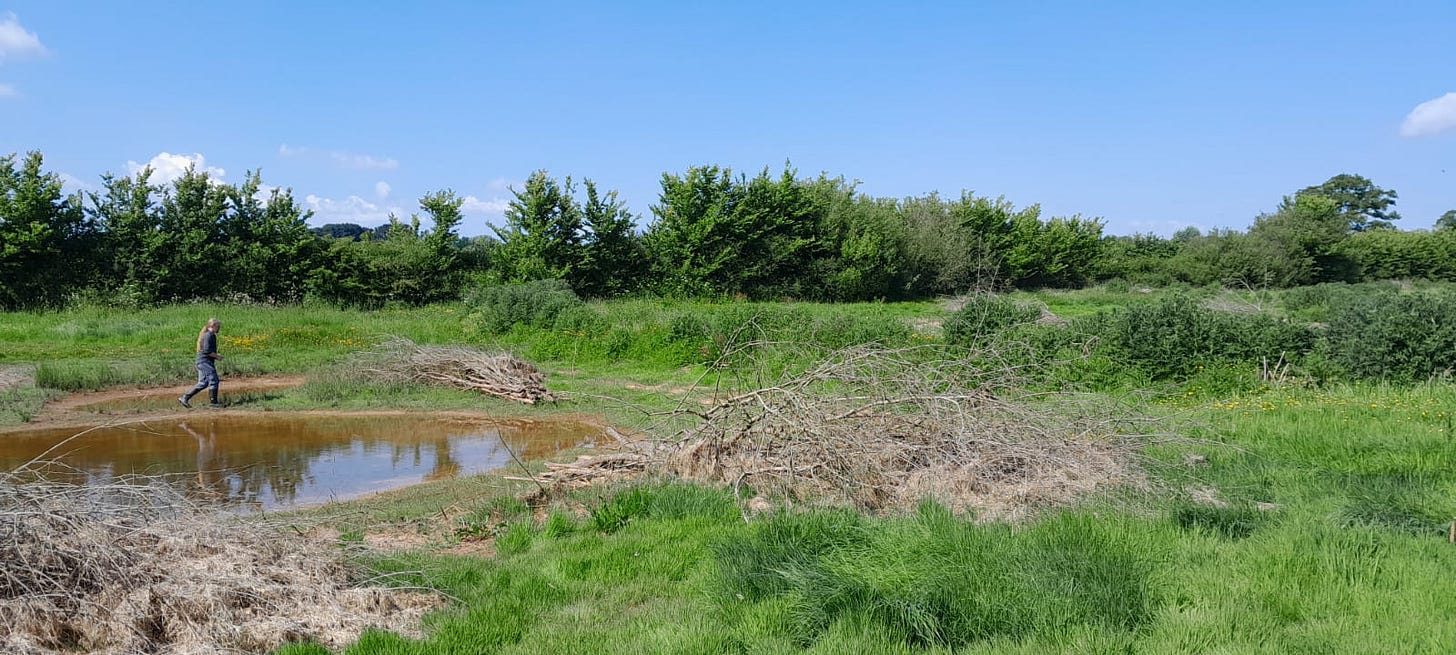How a Devon farm uses wetland creation to help weather climate extremes
Jason Greenway and David Thomas explain how turning unproductive fields into wetlands helped protect local roads, and keep the farm business afloat.
Listen to Jason & Dave’s story:
In this story we speak with David Thomas and Jason Greenway at Springwater Farm, on the Killerton Estate in Devon. David is a senior land advisor who works on natural flood management (leaky dams, scrapes and bunds), and Jason runs Springwater Farm with his wife Amelia. Together they have designed a small patch of wetland to slow the flow of water, reduce flooding, encourage vegetation during droughts, and make space for wildlife.
When Jason and Amelia took the land on, it was a heavy input farm, and since then they have been experimenting with agroforestry, silvopasture, and wetland creation. As they explain in the story, for them building a sustainably profitable farm is about adapting to drier summers and wetter winters — and finding ways to keep their farm both resilient and financially viable in response to climate change pressures.
Listen on your device:
Apple Podcasts
Soundcloud
Spotify
Subscribe to automatically download new episodes!
“With climate change, and weather changing on a yearly basis, your cattle growth rates are not the steady constant that you need. If you have a dry period, you don’t get the steady grass growth and they don’t have the correct sugars in the grass for them to grow at the rate that you need them to grow at, so you end up keeping the cattle longer and your profit levels go down. If you’re having a wet year, your cattle stay in the sheds longer which costs you more because you have to feed them in the sheds.”
“This sheep field wasn’t particularly productive, it was quite prone to surface water. So it was quite prone to flooding at the bottom end. So it is about trying to build resilience for drought, but you’re also putting it in for flood management because the road usually floods three or four times a year, and it hasn’t once [since we put this in].”
“Silvopasture is land that has had areas of trees put into it, but still grazing around it. The majority of wheat and barley that is grown in this country is to feed animals, so why don’t we create the best possible habitat to keep them out for longer, to have better quality meat as well as having the harvesting side of things. When it’s grade 1 or 2 arable land, it’s normally drier land, but it’s astonishing the amount of water that trees take up … billions of litres a year out of a normally flooded area.”
“If you think about engineered flood defences being put directly adjacent to infrastructure, that is the last line of defence. The idea with natural flood management is that we are slowing the water flow down further upstream so it doesn’t get to the point where all of that water is next to your front door or in your living room or running through the middle of your business premises all at once. If we slow it down, it improves the efficiency of the flood defences we already have around those communities and businesses”
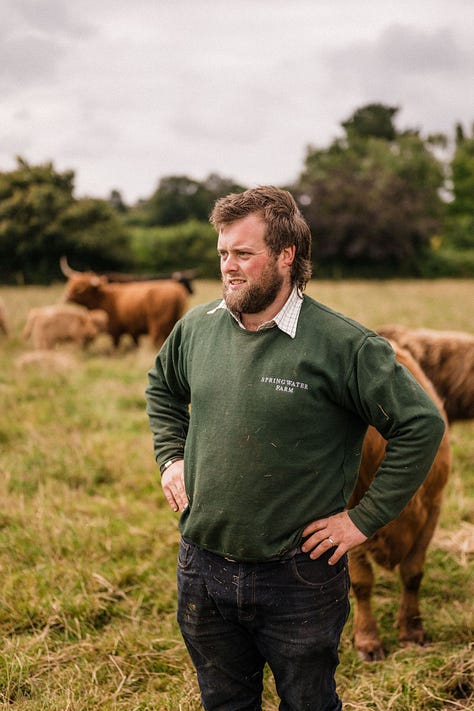
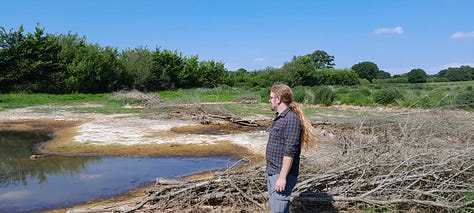
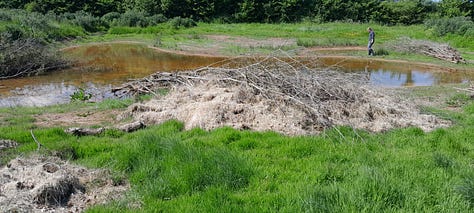
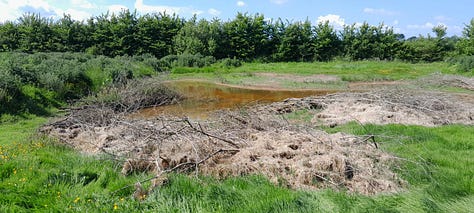
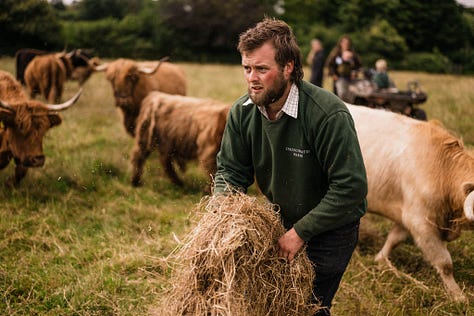
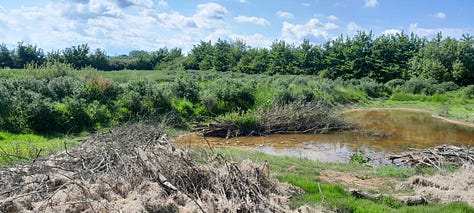
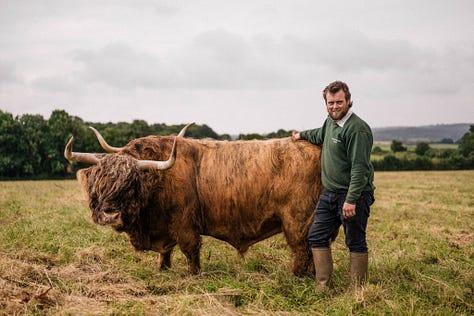
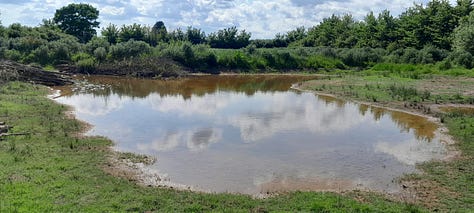
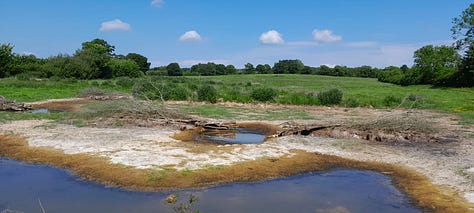
Keep posted. We’ll email you when new episodes arrive:
Hear the Show!
Don't miss an episode! Subscribe to download the show to your device:
Apple Podcasts
Soundcloud
Spotify
Follow us
Show updates, additional content, and other insights:
Facebook
Twitter
Instagram
Bluesky
TikTok
Stories From Round Our Way. Everyday conversations with people impacted by climate change.




